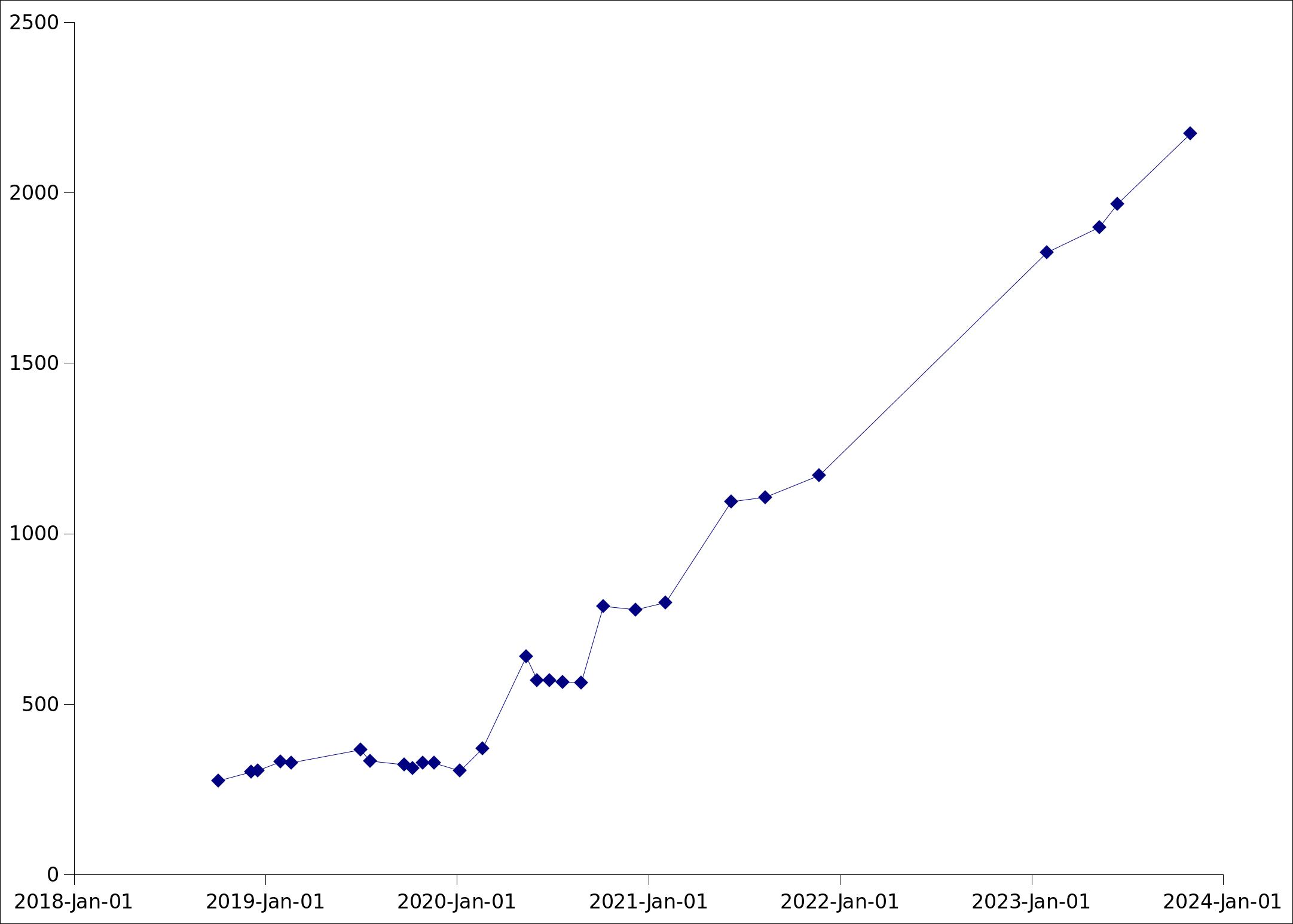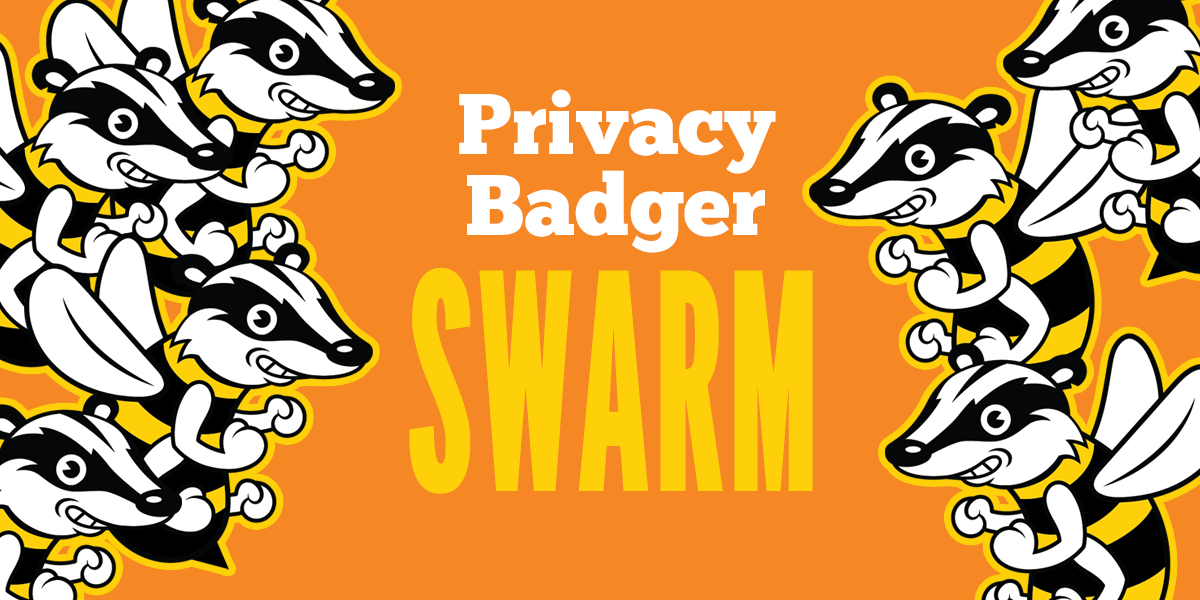Privacy Badger Puts You in Control of Widgets
The latest version of Privacy Badger 1 replaces embedded tweets with click-to-activate placeholders. This is part of Privacy Badger's widget replacement feature, where certain potentially useful widgets are blocked and then replaced with placeholders. This protects privacy by default while letting you restore the original widget whenever you want it or need it for the page to function.
Websites often include external elements such as social media buttons, comments sections, and video players. Although potentially useful, these “widgets” often track your behavior. The tracking happens regardless of whether you click on the widget. If you see a widget, the widget sees you back.
This is where Privacy Badger's widget replacement comes in. When blocking certain social buttons and other potentially useful widgets, Privacy Badger replaces them with click-to-activate placeholders. You will not be tracked by these replacements unless you explicitly choose to activate them.
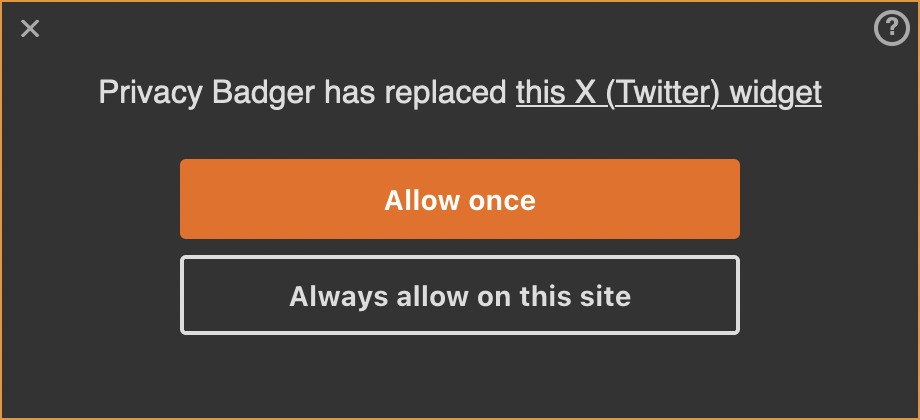
Privacy Badger’s placeholders tell you exactly what happened while putting you in control.
Changing the UI of a website is a bold move for a browser extension to do. That’s what Privacy Badger is all about though: making strong choices on behalf of user privacy and revealing how that privacy is betrayed by businesses online.
Privacy Badger isn’t the first software to replace embedded widgets with placeholders for privacy or security purposes. As early as 2004, users could install Flashblock, an extension that replaced embedded Adobe Flash plugin content, a notoriously insecure technology.
Flashblock’s Flash plugin placeholders lacked user-friendly buttons but got the (Flash blocking) job done.
Other extensions and eventually, even browsers, followed Flashblock in offering similar plugin-blocking placeholders. The need to do this declined as plugin use dropped over time, but a new concern rose to prominence. Privacy was under attack as social media buttons started spreading everywhere.
This brings us to ShareMeNot. Developed in 2012 as a research tool to investigate how browser extensions might enforce privacy on behest of the user, ShareMeNot replaced social media “share” buttons with click-to-activate placeholders. In 2014, ShareMeNot became a part of Privacy Badger. While the emphasis has shifted away from social media buttons to interactive widgets like video players and comments sections, Privacy Badger continues to carry on ShareMeNot's legacy.
Unfortunately, widget replacement is not perfect. The placeholder’s buttons may not work sometimes, or the placeholder may appear in the wrong place or may fail to appear at all. We will keep fixing and improving widget replacement. You can help by letting us know when something isn’t working right.
To report problems, first click on Privacy Badger’s icon in your browser toolbar. Privacy Badger’s “popup” window will open. Then, click the “Report broken site” button in the popup.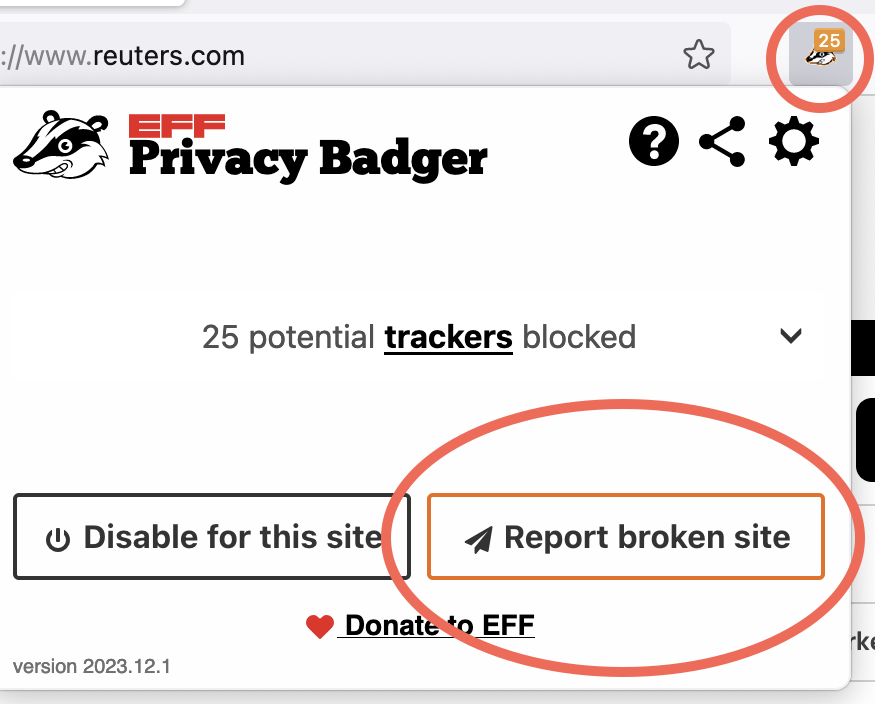
Pro tip #1: Because our YouTube replacement is not quite ready to be enabled by default, embedded YouTube players are not yet blocked or replaced. If you like though, you can try our YouTube replacement now.
To opt in, visit Privacy Badger's options page, select the “Tracking Domains” tab, search for “youtube.com”, and move the toggle for youtube.com to the “Block entirely” position.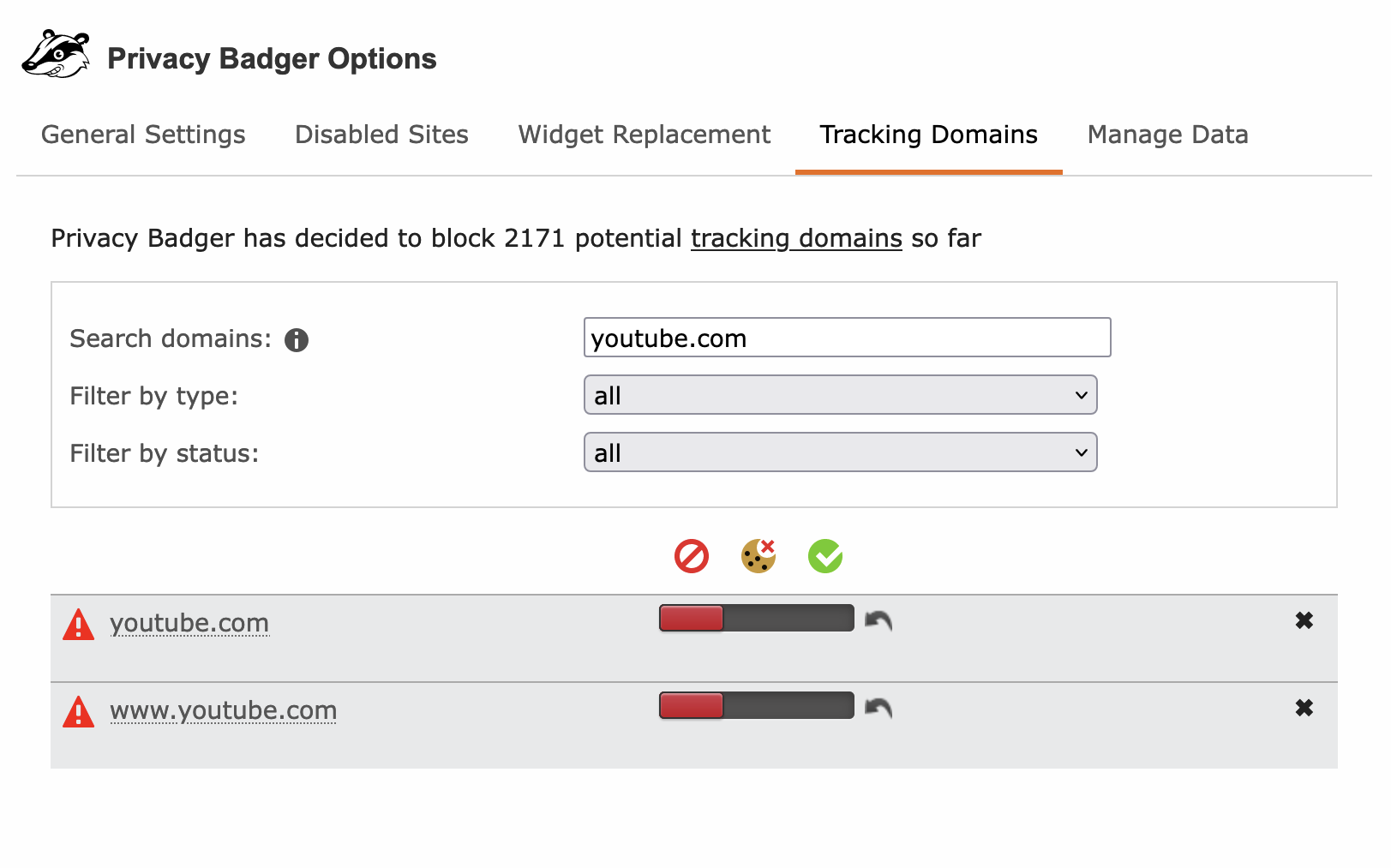
Pro tip #2: The most private way to activate a replaced widget is to use the “this [YouTube] widget” link (inside the “Privacy Badger has replaced this [YouTube] widget” text), when the link is available. Going through the link, as opposed to one of the Allow buttons, means the widget provider doesn't necessarily get to know what site you activated the widget on. You can also right-click the link to save the widget URL; no need to visit the link or to use browser developer tools.
Click the link to open the widget in a new tab.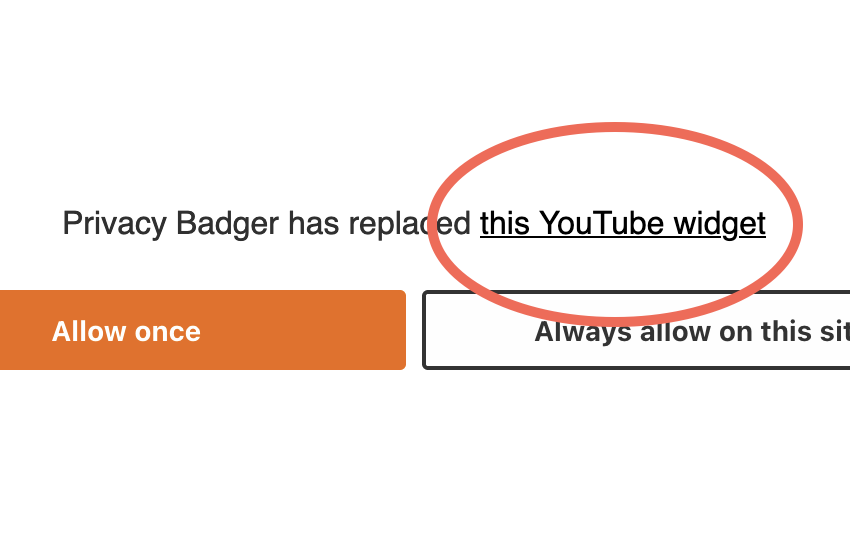
Privacy tools should be measured not only by efficacy, but also ease of use. As we write in the FAQ, we want Privacy Badger to function well without any special knowledge or configuration by the user. Privacy should be made easy, rather than gatekept for “power users.” Everyone should be able to decide for themselves when and with whom they want to share information. Privacy Badger fights to restore this control, biting back at sneaky non-consensual surveillance.
To install Privacy Badger, visit privacybadger.org. Thank you for using Privacy Badger!
- 1. Privacy Badger version 2023.12.1

